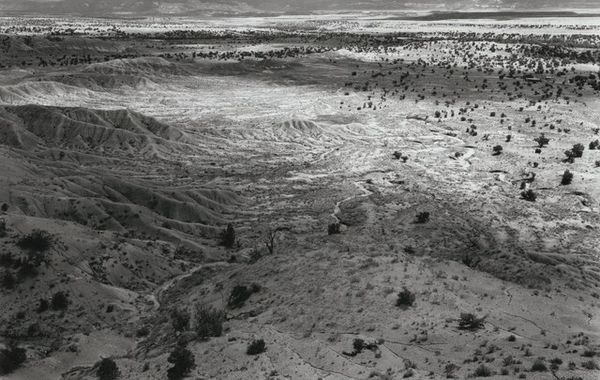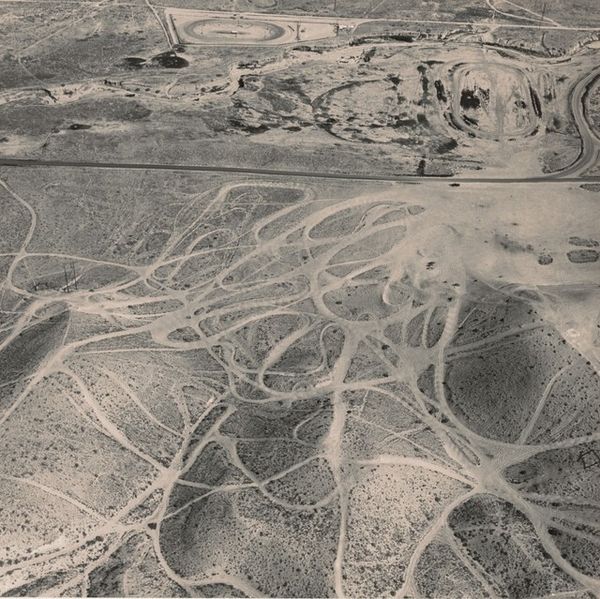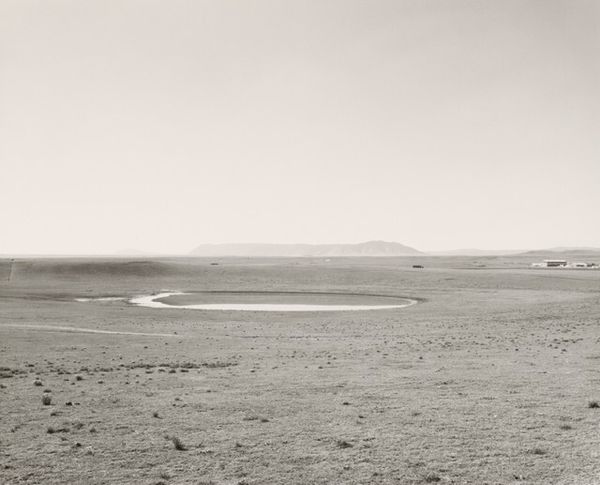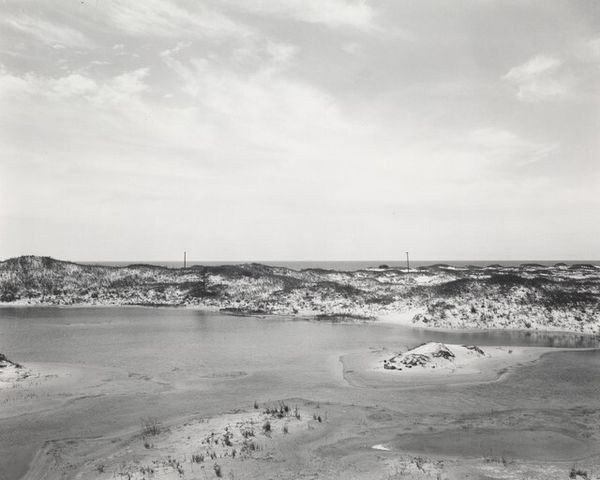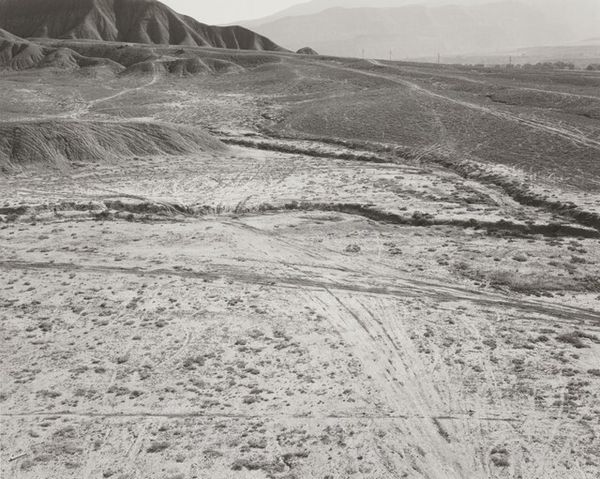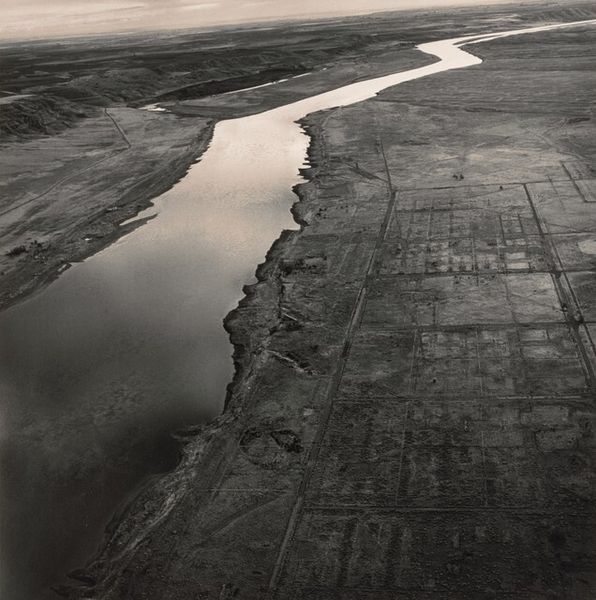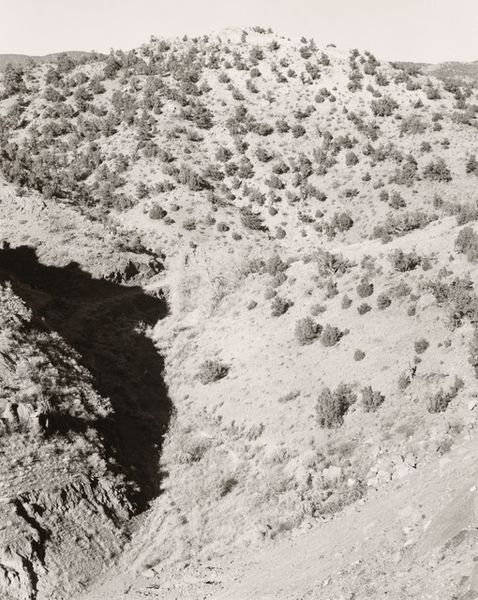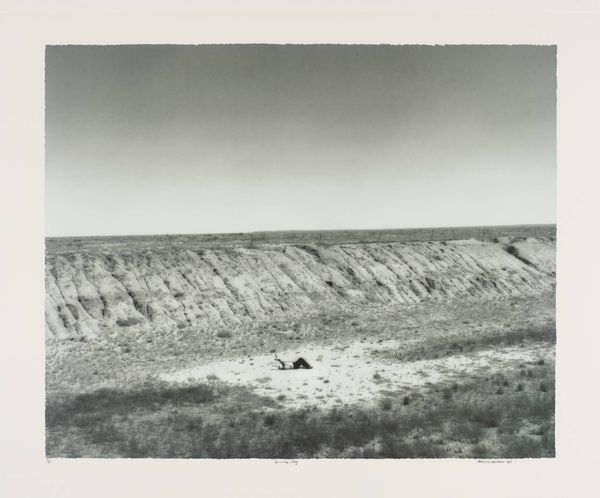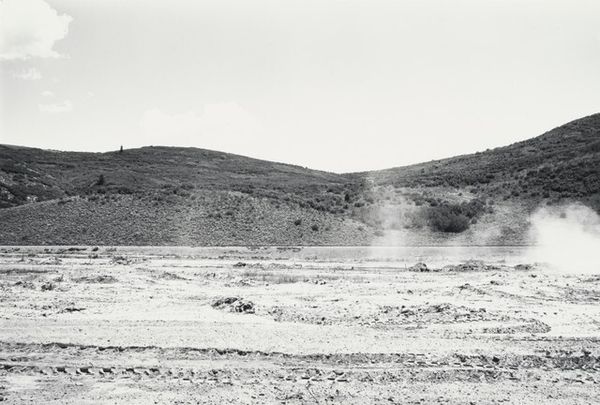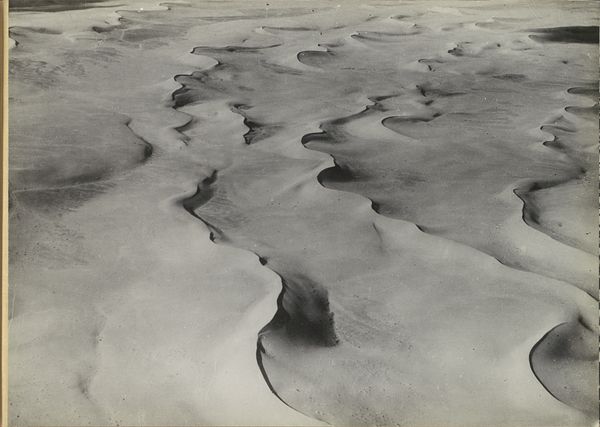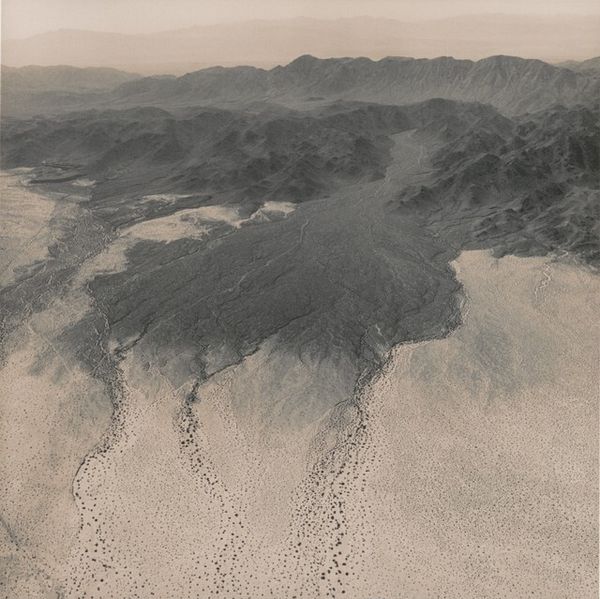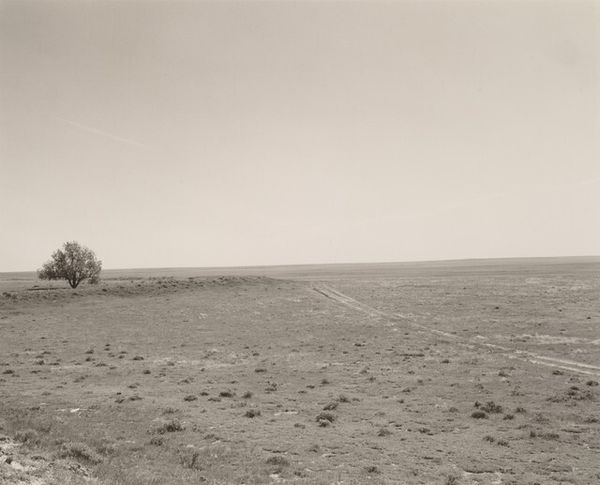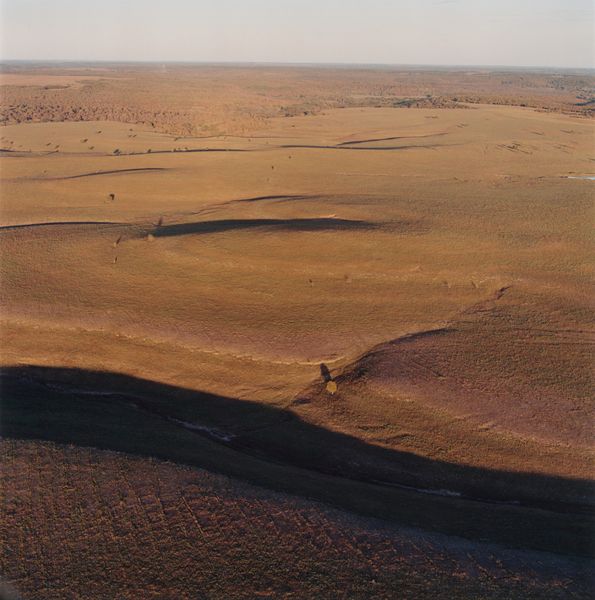
photography, gelatin-silver-print
#
black and white photography
#
landscape
#
photography
#
sky photography
#
gelatin-silver-print
#
monochrome photography
#
line
#
monochrome
#
modernism
#
realism
#
monochrome
Dimensions: image: 38 x 47 cm (14 15/16 x 18 1/2 in.) sheet: 40.6 x 50.4 cm (16 x 19 13/16 in.)
Copyright: National Gallery of Art: CC0 1.0
Editor: So, here we have Robert Adams' "Quarried mesa top, Pueblo County, Colorado," possibly from between 1978 and 1983. It’s a gelatin-silver print, and what immediately strikes me are all the tire tracks, like scars on the landscape. What do you see in this piece? Curator: Those "scars," as you call them, are precisely what draw my attention. This isn’t just about a landscape; it’s about the human impact on it, recorded materially through those tire tracks. Consider the labor involved in quarrying: extraction, transportation, the sheer industrial effort to reshape the land. It speaks volumes about our relationship to natural resources and consumption. Editor: So, the beauty isn't really the point here? Curator: The concept of beauty is definitely challenged. The gelatin-silver print, typically associated with aesthetic refinement, is here used to document and almost indict our practices. How does the work's scale influence its meaning, given that we see such a wide panorama? Editor: It’s interesting… because at first glance it’s so simple. Almost like a document. I wouldn't necessarily call it *pretty*. But, thinking about scale, it is difficult to feel that there's much hope for repair or redemption in this kind of marred landscape. Curator: Precisely! The vastness of the quarried land becomes a testament to widespread, systemic change, almost a consequence of unregulated expansion and mass-production, wouldn't you say? And, while it does not overtly depict the human workforce, it evokes their absent presence – and raises difficult questions around fair labor conditions and sustainable practices. Editor: That’s really interesting, thinking about the labor instead of just the landscape. Now, seeing the landscape, it reminds me of other types of production like farming… and consumption practices as well, because there is no place left to consume and nothing that can be re-used at this point. Curator: Yes, exactly! This single gelatin-silver print provokes discussions about commodification, ethics, and even environmentalism, highlighting how artistic materials are also political agents. Editor: I had never thought about gelatin-silver prints having a political agency, but this reframes my thinking on documentary photography as more than just bearing witness! Curator: Excellent. Hopefully, this piece encourages continued contemplation of materials as evidence.
Comments
No comments
Be the first to comment and join the conversation on the ultimate creative platform.
